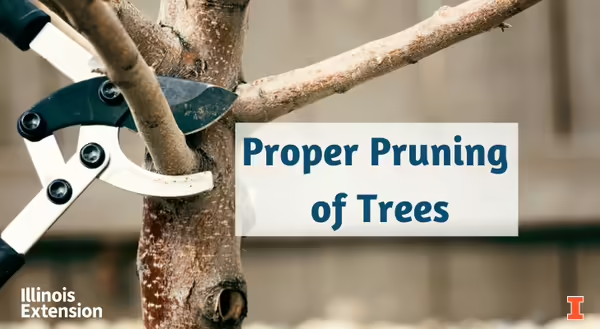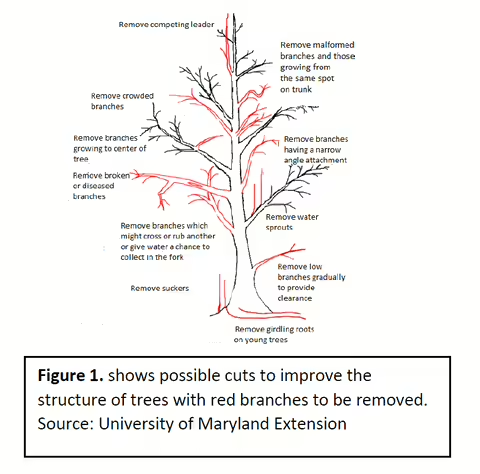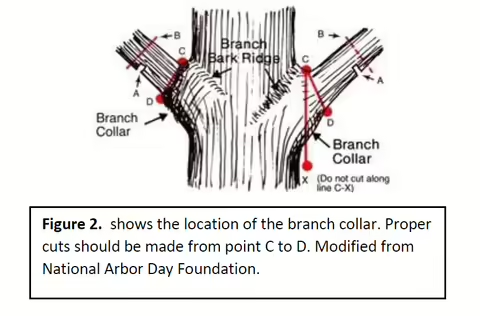
Trees in the landscape can be easily overlooked for the all the benefits they provide us whether that be casting shade on a warm, summer day, housing our feathered, birds friends, or adding a touch of color to our lawns. According to the Council of Tree and Landscape Appraisers, trees on a property can increase the value of a home by almost 20%. However, that value can be diminished when trees are not properly maintained through pruning and thinning.
Pruning deciduous trees is best done in late winter around February and March when the trees are dormant. Pruning at this time can help to avoid certain diseases or physiological problems such as oak wilt in oaks, stem cankers in honey locusts, Dutch elm disease in elms, and fire blight in apple trees (includes flowering crabapples, mountain ash, and hawthorns). With the tree leaves dropped, we can see the structure of the tree allowing us to make easier pruning decisions.
Pruning should begin when trees are young; by doing this, pruning later in the tree’s lifetime can be reduced. In a young tree, it is important to develop a single dominant leader from which branches will develop. Trees can produce multiple leaders which can result in greater issues further down the road. It is also important to remove dead and diseased branches; this helps defend against the spread of pests and diseases to prevent further damage to the tree. Removal of dead and diseased branches can really be removed at any point in the year. Trees should also be thinned out to remove any branches that are crossing or rubbing as this can create wounds making the tree susceptible to diseases. Branches with a narrow crotch angle should also be evaluated for removal. As trees mature, bark becomes enclosed in the narrow crotch creating a weak joint; in the occurrence of a wind storm, that joint will easily split. As I have already mentioned, it is much more effective for the life of the tree and for your wallet to practice proper pruning while the tree is young. Figure 1 provides a graphic of ideal branches to be removed; however, it is suggested to not remove more than 15 to 20% of the canopy, so it is important to prioritize cuts.
Before getting started, be sure that your tools are clean and sharp. When cutting diseased branches, it is a good idea to clean your tools when finished to prevent spread. The tools you may need will vary based on the size of the branch to be cut. For smaller branches, a pair of pruning shears will work. For branches up to 1.5” in diameter, lopping shears can be used. For larger branches, you may choose to use a hand saw or a chain saw. Pole saws can also be useful for pruning branches out of reach. When using these tools, it is also important to protect yourself with the proper PPE.
When making cuts, the limb should be removed at the collar; the collar is where the limb attaches to the tree (see figure 2). Cutting at this point allows the tree to form a natural protective boundary. In the past, wound paints or dressings were often used for this; however, research has shown they are not as effective with most expects recommending they not be used.
If tree pruning is something you think you might need done, but the idea of properly pruning seems daunting, we do have certified arborists that can be of great help. The International Society of Arboriculture has an online directory to help you find a local certified arborist.
Good Growing Tip: Proper tree selection and placement can also help to cut down on tree pruning needs. You can look for features such as a single dominant leader when purchasing a tree.
Want to get notified when new Good Growing posts are available? SIGN UP HERE!

